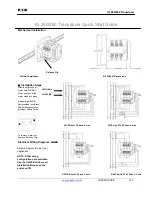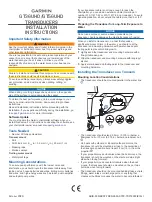
Revision 4.0
STT850 Series HART/DE Option User’s Manual
Page 7
2 Communication Modes
2.1 Overview
The STT850 SmartLine Temperature Transmitter can be configured for operation with Honeywell’s
Digitally Enhanced (DE) communication protocol, HART version 7, and Fieldbus communication.
This manual addresses the processes to configure and calibrate a Transmitter for DE and HART
communication. Refer to the
STT850 FF Transmitter with FOUNDATION
Fieldbus Option
Installation & Device Reference Guide
, document number 34-ST-25-39 for Fieldbus details.
2.2 Digitally Enhanced (DE) Mode Communication
Although it is unnecessary to put a control loop in manual mode before communicating
with a Transmitter operating in DE mode, caution is required if there is potential for error in
identifying the operating mode.
In DE mode, the PV is available for monitoring and control purposes.
Much of the operation in the Digitally Enhanced (DE) mode is similar to that of analog operation.
The essential characteristics of DE mode operation are shown in Figure 4.
Figure 4
– DE Mode Value Scaling
As indicated at the right of Figure 4, output values of process variables, as well as communications
are transferred to a receiving device digitally. The digital coding is Honeywell proprietary, which
requires the use of DE-capable Honeywell control equipment.
The use of DE mode offers several advantages:
Process Safety:
Unlike analog mode, communications devices do not
bump
the PV value.
Accuracy:
requires less maintenance.
Digital communication:
Relatively immune to small variations in circuit resistance or supply
voltage.
Facilitates Maintenance Tasks:
Honeywell control systems include operating displays that
enable direct communication with transmitters operating in DE mode.
















































